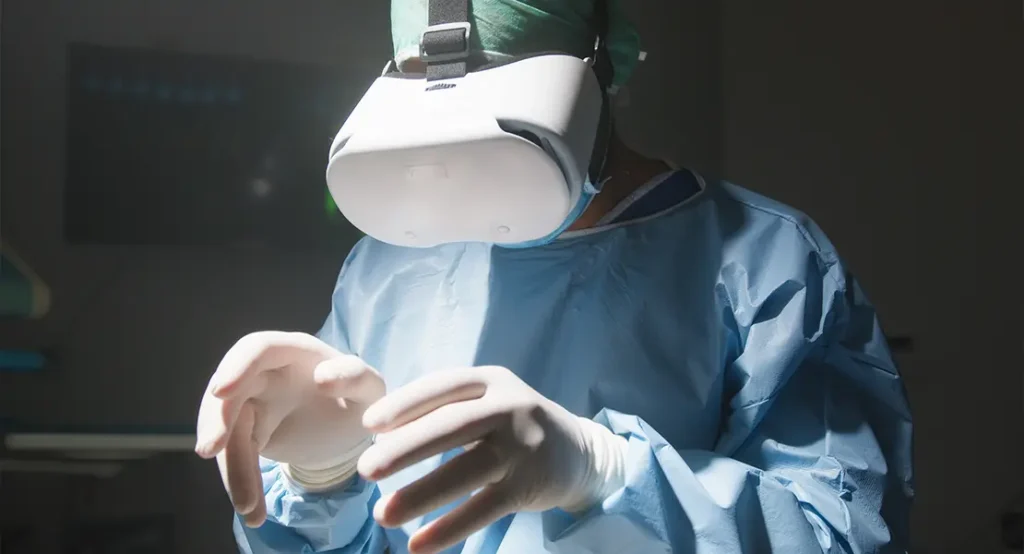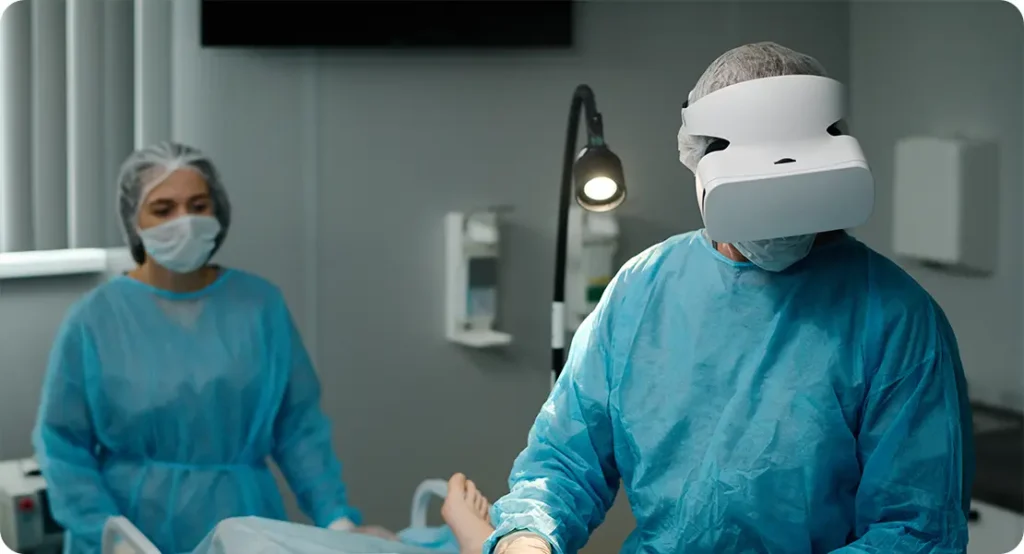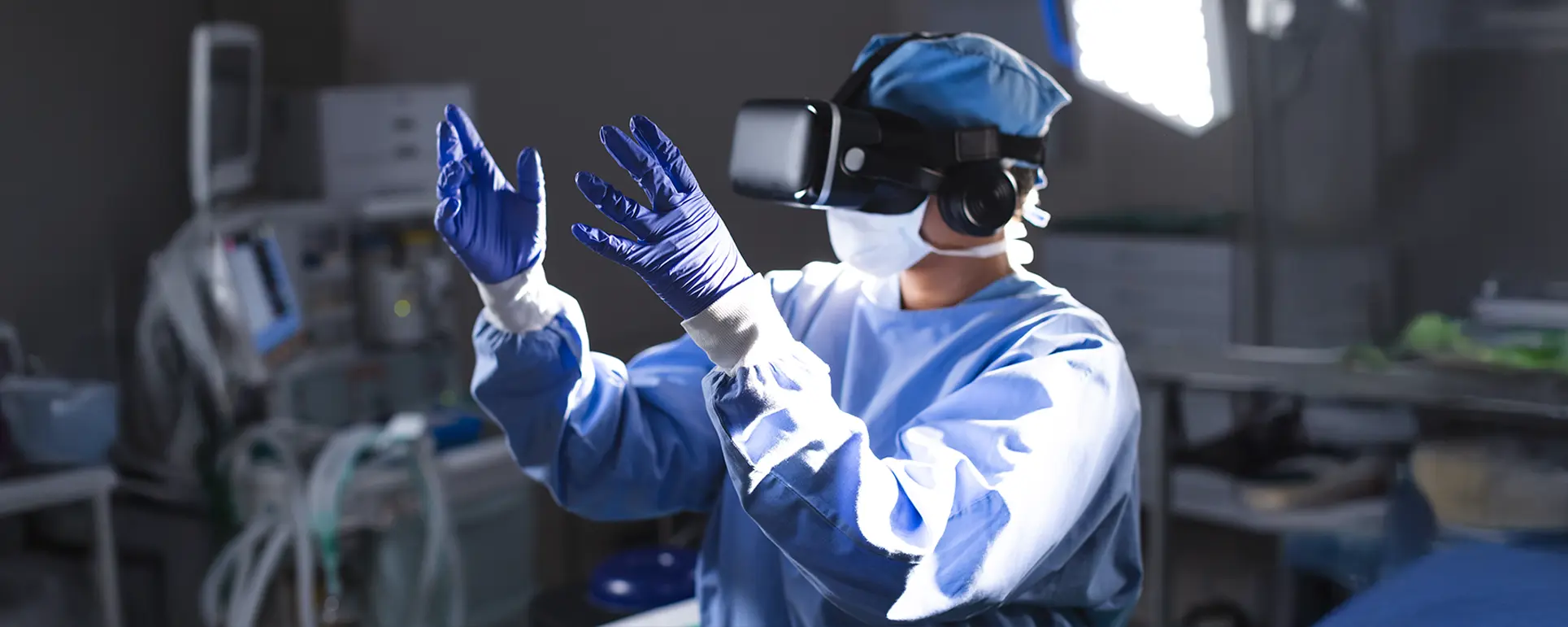If you’ve ever wondered whether VR headsets are just for gaming, think again. In the world of ophthalmology, virtual reality (VR) is becoming one of the most exciting tools for training cataract surgeons. Cataract surgery—particularly phacoemulsification—demands incredible precision, hand-eye coordination, and the ability to react swiftly under pressure. Traditional learning models involving observation and supervised practice are now being complemented—and in some cases, transformed—by VR simulators.
In this article, we’re going to explore whether virtual reality simulators are genuinely improving cataract surgery training. We’ll look at the latest research, how these tools are being used in practice, and what they mean for complication rates, confidence building, and overall skill acquisition in ophthalmology trainees.
Why Training for Cataract Surgery Is So Challenging
Cataract surgery might be routine for experienced surgeons, but it’s anything but simple for those just starting out. The phacoemulsification technique, which uses ultrasound energy to break up and remove the cloudy lens, involves working within a tiny, delicate space with minimal margin for error.
Training in this technique comes with several hurdles:
- High stakes: The eye is unforgiving, and a single mistake can lead to serious complications like posterior capsule rupture, dropped nucleus, or endophthalmitis.
- Limited patient access: Due to ethical and medicolegal concerns, junior trainees often get limited hands-on time during live surgeries.
- Learning curve: Phacoemulsification isn’t something you master overnight. It can take dozens—if not hundreds—of supervised cases to become proficient.
That’s where VR simulation has started to offer real promise.
What Are Virtual Reality Simulators in Cataract Surgery?
Virtual reality simulators for ophthalmic training are sophisticated computer-based platforms designed to mimic the full range of tasks involved in eye surgery. The most well-known models—like the Eyesi Surgical Simulator—allow users to practise everything from capsulorhexis and phaco chop to IOL insertion.
Key features include:
- 3D stereoscopic visualisation: Users see a simulated eye in three dimensions, just as they would under a microscope.
- Haptic feedback: Simulators include force-feedback systems to replicate how surgical tools feel in the hand.
- Performance metrics: Trainees receive objective feedback on things like tremor control, centring of incisions, and surgical efficiency.
These platforms offer a safe, repeatable environment to practise complex steps until they become second nature—without ever putting a real eye at risk.
What Does the Research Say?
You might be asking: are these simulators just flashy gadgets, or do they actually improve outcomes? Several research studies have weighed in—and the evidence is growing in their favour.
Improved Complication Rates
A study published in Journal of Cataract & Refractive Surgery (2019) found that ophthalmology residents who completed a structured VR training programme on the Eyesi simulator had a significantly lower rate of posterior capsule rupture in their first 50 phacoemulsification cases compared to those trained traditionally. The difference wasn’t marginal—it was nearly 50% lower.
Skill Transfer to Real Surgery
Another study by Ferris et al. (2013) demonstrated that simulator-trained residents performed faster, more confidently, and with fewer intraoperative complications in wet lab and early real-world settings. The structured repetition of specific manoeuvres was shown to accelerate the learning curve by at least 20%.
Objective Assessment
Traditional training often relies on subjective impressions of progress. Simulators, on the other hand, generate quantifiable metrics. Studies have shown that residents trained with simulator support score consistently higher on global rating scales and objective structured assessments.
So, the short answer: yes—VR simulators do appear to reduce complication rates and improve surgical performance in trainees.
Skill Acquisition: From Novice to Confident Surgeon
Let’s break down how simulators support each phase of skill development:
- Building Muscle Memor
One of the first hurdles in surgical training is simply getting comfortable with the instruments. VR simulators allow repetitive practice without the pressure of a live setting. Just like a pianist repeating scales, the resident can drill incision placement, foot pedal control, and bimanual coordination. - Enhancing Decision-Making
VR simulators now include modules with varying case complexity. From soft cataracts to dense brunescent lenses or compromised zonules, trainees get exposure to rare scenarios they may not encounter often in real clinics. This builds better surgical judgement and preparedness. - Reducing Cognitive Load
Early in training, surgeons are so focused on basic mechanics that it’s hard to think ahead. With enough simulator hours, the basics become automatic—freeing up cognitive resources for higher-order decision-making, such as adapting technique mid-case or managing complications.
Where Do Simulators Fit in Today’s Training Curriculum?

Many teaching hospitals around the world now incorporate VR simulation into their formal training structure. Some even require residents to pass simulator proficiency benchmarks before entering the operating theatre.
Institutions using VR simulators often report:
- Faster progression: Residents reach independence with fewer supervised cases.
- Improved confidence: Trainees report feeling more mentally prepared for their first real surgery.
- Better safety culture: Simulators reduce early surgical errors, improving patient outcomes and legal risk profiles.
The Royal College of Ophthalmologists in the UK and the American Academy of Ophthalmology have both endorsed simulation-based training as part of modern surgical education.
Limitations of VR Simulators: What They Can’t Do
As promising as simulation is, it’s not a magic bullet. Some aspects of surgery simply can’t be fully replicated by VR.
- Emotional Stress Management
Operating on a real patient comes with psychological pressure that can’t be simulated. Dealing with a tense theatre environment or a sudden complication brings a level of stress that even the best VR system can’t quite mimic. - Tissue Variation
Human tissue varies subtly between patients—something simulators struggle to reproduce. Real-world cataract cases might include unexpected anatomical challenges, bleeding tendencies, or micro-instrument instability. - Interpersonal Skills
Surgery isn’t done in isolation. Communicating with theatre nurses, anaesthetists, and sometimes even conscious patients is part of the job. These soft skills are critical but are typically outside the scope of VR platforms.
So while VR simulators are powerful tools, they’re best seen as one piece of a broader training puzzle.
The Economics of Simulation Training
You might be wondering: with such advanced tech, how much does this all cost? The Eyesi Surgical simulator, for example, comes with a hefty price tag—often upwards of £100,000 depending on the configuration.
However, when viewed as an investment in patient safety and training efficiency, many institutions consider it well worth the spend. Potential benefits include:
- Fewer intraoperative complications (reducing litigation and reoperation costs)
- Shorter training times (lower supervision burden)
- Better patient outcomes (supporting institutional reputation)
Some centres share equipment regionally or seek joint grants to manage costs.
How Trainees Are Responding to VR Training
Feedback from residents and junior surgeons who’ve used VR simulators is overwhelmingly positive. Many describe the experience as ‘eye-opening’ (pun fully intended) and say it gave them the confidence to perform real surgeries much sooner than expected.
Reported benefits include:
- Better hand control
- Earlier understanding of anterior segment anatomy
- Increased motivation due to real-time scoring and gamified learning modules
What’s more, the ability to practise repeatedly without the anxiety of causing harm is often cited as a key factor in developing early confidence.
How Simulation Supports Equal Access to High-Quality Surgical Training
One of the most overlooked benefits of virtual reality simulators in cataract surgery training is how they’re helping to level the playing field across training institutions. Not every hospital has the same volume of cataract cases, or the same availability of expert surgical mentors. This variability can make it difficult for some trainees—especially those in smaller or rural centres—to get enough hands-on experience early in their careers. But simulation changes that.
When a simulator is available on-site, it means every trainee has access to consistent, high-quality, and standardised surgical practice. Whether you’re in a leading London teaching hospital or a district general hospital in a more remote part of the UK, the simulator delivers the same high-fidelity experience. You’re exposed to the same difficult cases, graded feedback, and structured skill-building modules.
What’s more, simulation-based training removes the awkwardness of competition among trainees for live cases. Instead of waiting to get picked to assist in theatre, you can clock in simulator hours on your own schedule. That autonomy not only boosts confidence but also creates a safer environment where you’re allowed to make mistakes and learn from them—something you simply can’t afford to do on a real patient.
In this way, virtual reality training isn’t just about improving individual performance—it’s also about fairness and access. It ensures that every trainee, regardless of their geographic location or patient volume, gets the opportunity to become a confident and competent cataract surgeon.
Looking Ahead: What’s Next for VR in Eye Surgery?

As technology continues to evolve, VR training tools are also becoming more advanced. Several emerging developments include:
- AI integration: Some platforms are beginning to use artificial intelligence to offer tailored feedback, adjust difficulty levels in real time, and even predict future performance trajectories.
- Multiplayer simulation: New systems allow team-based training, enabling coordination between surgeon, assistant, and scrub nurse in a shared virtual environment.
- Remote access: Cloud-based simulators are in development, offering the potential for remote training and assessment, especially useful for lower-income or rural regions.
In short, the simulation landscape is expanding rapidly—and its impact on ophthalmic training looks set to grow even further in the years ahead.
Frequently Asked Questions (FAQs)
- What is the Eyesi Surgical Simulator?
The Eyesi Surgical Simulator is one of the most widely used virtual reality systems for ophthalmic surgical training. It provides high-fidelity simulations of various procedures—including cataract surgery—using stereoscopic 3D visuals, haptic feedback, and performance analytics. Trainees can practise critical steps like capsulorhexis, phacoemulsification, and IOL insertion repeatedly until they master the techniques. - Do VR simulators actually reduce complications in cataract surgery?
Yes, several peer-reviewed studies have shown that residents trained with VR simulators experience significantly fewer complications—such as posterior capsule rupture—in their early surgeries. These tools allow for extensive rehearsal in a safe, controlled environment, which improves hand control, confidence, and procedural accuracy before operating on real patients. - Are simulators a mandatory part of cataract surgery training?
Not everywhere, but an increasing number of institutions now require residents to reach competency benchmarks on simulators before progressing to live surgery. In the UK, the Royal College of Ophthalmologists supports simulation-based education as a valuable component of early surgical training. - What skills can you learn on a cataract surgery simulator?
You can learn nearly all aspects of phacoemulsification—from incision-making and capsulorhexis to nuclear disassembly, cortical clean-up, and IOL implantation. Simulators also teach proper microscope handling, foot pedal control, and instrument positioning, all with real-time performance feedback. - Can simulators prepare you for surgical complications?
To some extent, yes. Modern simulators include training modules that simulate common complications such as capsular rupture or zonular weakness. These modules are designed to test how quickly and effectively a trainee can adapt to unexpected situations—although they still can’t replicate the emotional intensity of managing complications in a real patient. - Is VR training suitable for experienced surgeons too?
Absolutely. Many experienced surgeons use simulators to refine new techniques, practise complex cases, or warm up before surgery. It’s not just a beginner’s tool—it’s also a way to maintain surgical sharpness and trial emerging methods without risk. - How much do these simulators cost?
The price varies depending on the model and features, but high-end systems like Eyesi can cost over £100,000. Despite the cost, many training institutions justify the expense through improved trainee readiness, reduced complication rates, and overall enhanced patient safety. - Do patients benefit from VR-trained surgeons?
Yes. Patients treated by VR-trained surgeons often have better early outcomes due to the increased preparedness of their clinicians. Simulator-trained surgeons are more likely to manage surgical steps smoothly and respond effectively to intraoperative challenges, which improves both safety and surgical precision. - What does the future hold for simulation in cataract surgery?
Future developments include AI-assisted feedback, multiplayer training environments, and remote-access VR platforms. These advancements aim to make simulation more personalised, collaborative, and accessible—especially in underserved areas. Simulation is expected to become an even more integral part of surgical education in the coming years.
Final Thoughts: Simulation Is Here to Stay
So, are virtual reality simulators improving cataract surgery training? The evidence says yes—without question. They help reduce complication rates, improve surgical confidence, and accelerate skill acquisition in a controlled, measurable way.
That said, they’re not a replacement for real-world experience or mentorship. Think of them as a powerful supplement—a way to prepare, refine, and build a rock-solid foundation before stepping into the operating theatre.
If you’re training in ophthalmology, or mentoring someone who is, embracing this technology could make all the difference. And if you’re a patient wondering how your future surgeon got so good? There’s a good chance VR played a part in it.
References
- Ferris, J.D., Donachie, P.H.J., Johnston, R.L., Barnes, B., Olaitan, M. and Sparrow, J.M., 2020. Royal College of Ophthalmologists’ National Ophthalmology Database study of cataract surgery: report 6. The impact of EyeSi virtual reality training on complication rates of cataract surgery performed by first and second year trainees. British Journal of Ophthalmology, 104(3), pp.324–329.
Available at: https://pubmed.ncbi.nlm.nih.gov/31142463/ - Winebrake, J.P., McMahon, J.F. and Sun, G., 2020. The Utility of Virtual Reality Simulation in Cataract Surgery Training: A Systematic Review. Journal of Academic Ophthalmology, 12, e‑221–e‑233.
Available at: https://doi.org/10.1055/s-0040-1718555 - Thomsen, A.S.S., Smith, P., Subhi, Y., la Cour, M., Tang, L., Saleh, G.M. et al., 2017. High correlation between performance on a virtual‑reality simulator and real‑life cataract surgery. Acta Ophthalmologica, 95(3), pp.307–311.
Available at: https://onlinelibrary.wiley.com/doi/10.1111/aos.13275 - Dormegny, L., Lansingh, V.C., Lejay, A., Chakfé, N. et al., 2024. Virtual reality simulation and real‑life training programs for cataract surgery: a scoping review of the literature. BMC Medical Education, 24(1), 1245.
Available at: https://www.ncbi.nlm.nih.gov/pmc/articles/PMC11529314/ - Khullar, S., Mishra, S.K., Joshi, A. et al., 2023. Eye on the Future: Virtual Reality Surgical Simulator. Delhi Journal of Ophthalmology, 33(3), pp.250–254.
Available at: https://journals.lww.com/djo/fulltext/2023/33030/eye_on_the_future__virtual_reality_surgical.22.aspx

